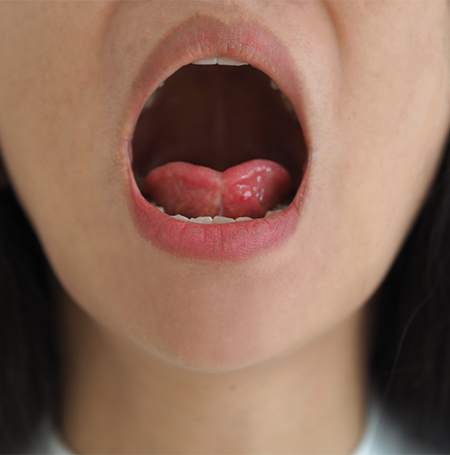“As a parent, I didn’t realize that my child might need therapy. I thought it was normal when they occasionally breathed through their mouth, especially during sleep. I didn’t pay much attention to the minor speech difficulties, thinking they’d grow out of it. It took me a while to connect the dots between their thumb-sucking and how it could affect their oral and facial muscle development. I had no idea there could be a connection between getting braces for my child and the possibility that their crooked teeth might be related to their mouth function. These subtle signs seemed harmless, but I gradually realized they might be early indicators that my child could benefit from orofacial myology evaluation and therapy.”
 Let’s talk about OMDs…
Let’s talk about OMDs…
It’s short for orofacial myofunctional disorders, which are functional abnormalities in the muscles around the face, lips, jaw, mouth, or tongue.
They’re not always painful, but they can be, like when you have problems with your temporomandibular joint (TMJ). But if you’ve ever winced or felt discomfort in these areas, you might have an OMD.
Some other signs include mouth-breathing, crooked teeth, a jam-packed mouth, a lopsided look on the lips or face, tongue thrust, or struggles with chewing and speech. Oh, and keep an eye out for dental quirks like overjet or open bite.
If our facial muscles “go wonky” during daily activities like resting, talking, or swallowing, it can lead to face and neck pain, breathing troubles, or sleep disturbances.
“So, how does one know they’re around?”
They’re a bit mysterious, but we know some of their origins. Think:
Long-term pacifier love…
Non-stop thumb-sucking…
Extra-long bottle days…
Constant lip-licking…
Even nail-biting marathons…
Enlarged tonsils, adenoids, allergies, or a tricky tongue-tie can be in the mix, too.
Genetics can play a role… or sometimes, it’s just the way those muscles or structures grow.
 Myofunctional therapy is like a superhero…
Myofunctional therapy is like a superhero…
It swoops in to help you correct your oral posture. That means sealing the lips with a suctioned tongue from back to tip.
This superhero is on a mission to promote nose-breathing, good chewing habits, and proper swallowing – for children or adults.
Getting treated by an orofacial myologist is like hitting the gym for your mouth muscles. Picture short exercises, almost like a workout routine, specifically designed to train your mouth and face to function just right. It’s a bit like how you’d hit the gym to build up other muscles in your body. The goal is to give you a personalized plan that hits all the right notes.
Patients often experience an improved quality of life after treatment. This non-invasive and painless therapy gets to the root of the problem, relieving OMD symptoms.
When it comes to children, the earlier we detect and address orofacial muscle disorders, the better we allow for normal growth and development.
“I remember the countless years I spent in speech therapy as a child, and it was not easy. Now, as a parent with a child who’s facing similar issues, I’m so thankful to have safer and non-invasive options available. It’s a far cry from the endless therapies, jaw surgeries, and teeth extractions I had to go through. I’m glad I can spare my child from the difficulties I faced back then, and it’s a big relief for my wallet, too – without the need for costly and ongoing procedures.”
 “Why haven’t I heard of myofunctional therapy before?”
“Why haven’t I heard of myofunctional therapy before?”
Well, it’s been around for a century, but many doctors and dentists didn’t get the memo.
But don’t worry: The field’s catching up as more folks like you show interest in staying ahead on the whole health front.
Let’s put the puzzle together and restore your comfort and confidence!
You can start your oral superhero journey today. Just call and schedule your free consultation by clicking the button below.

